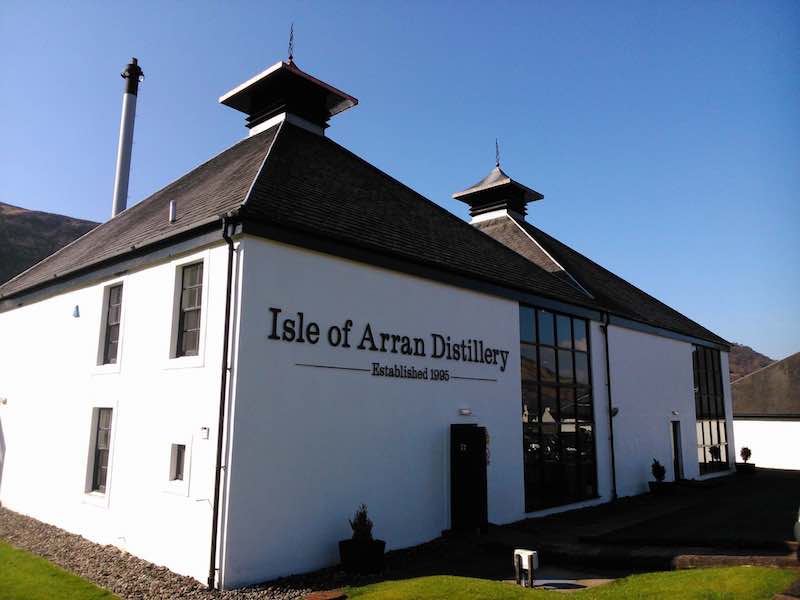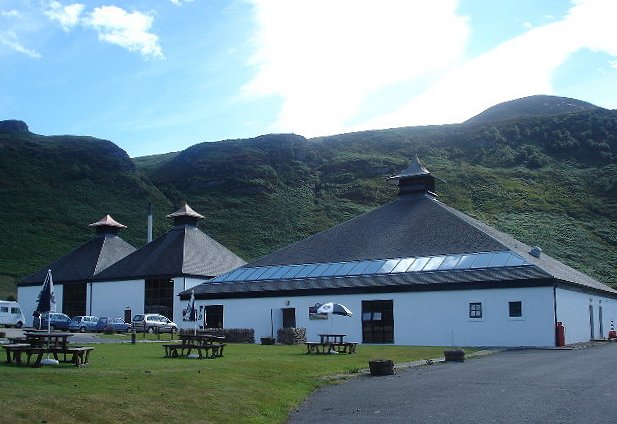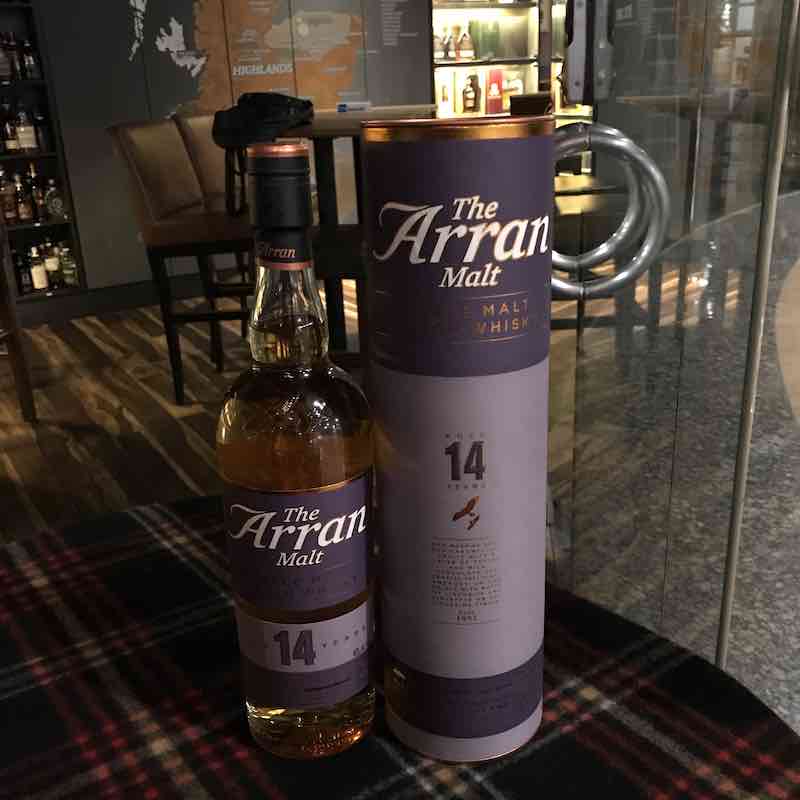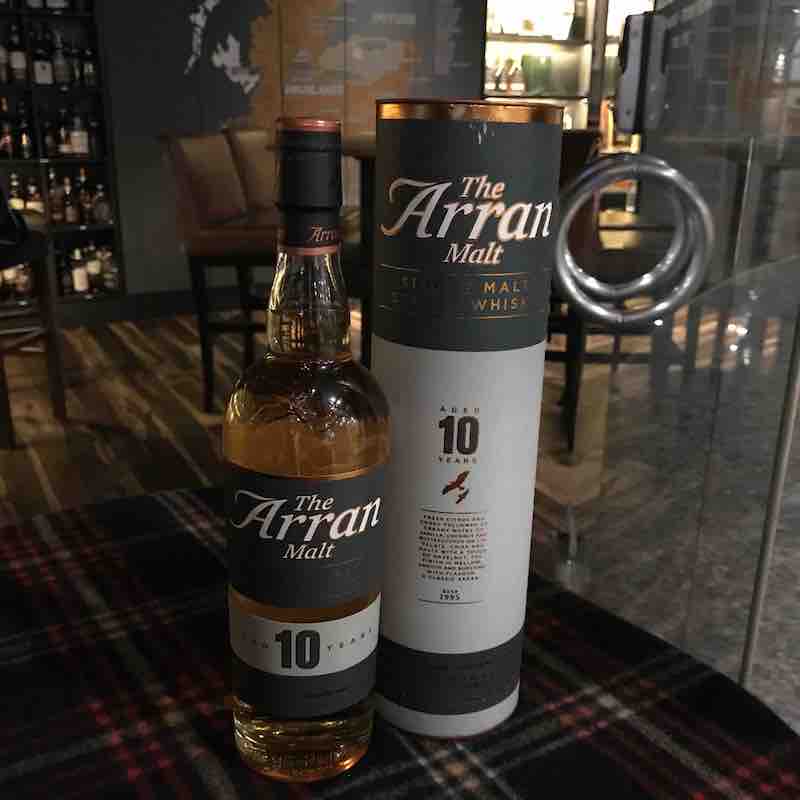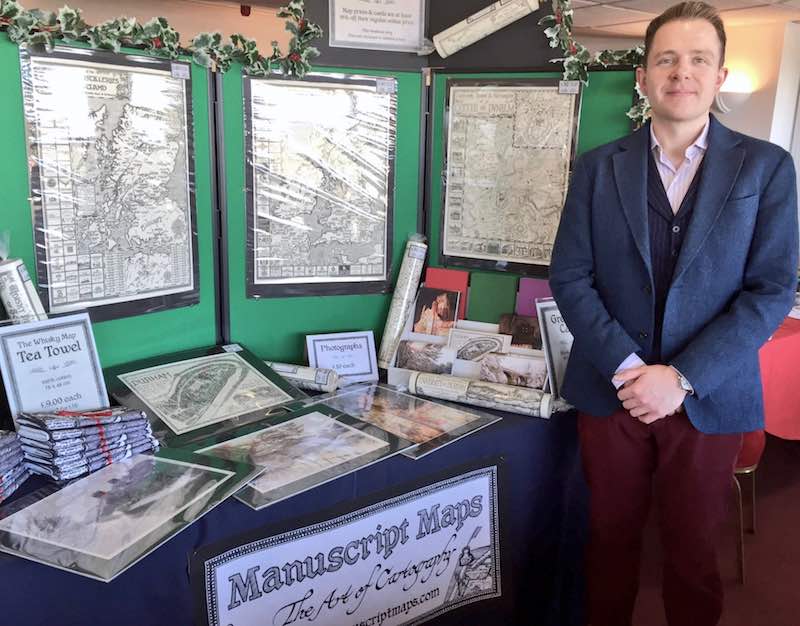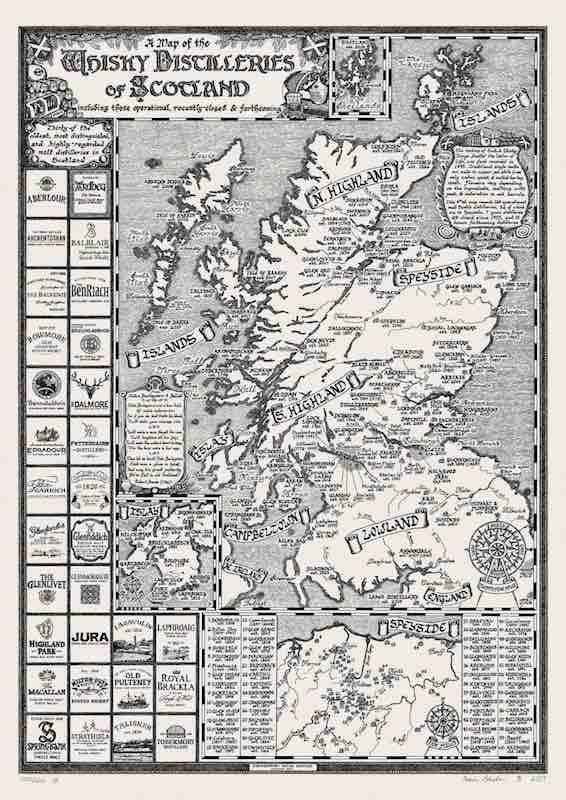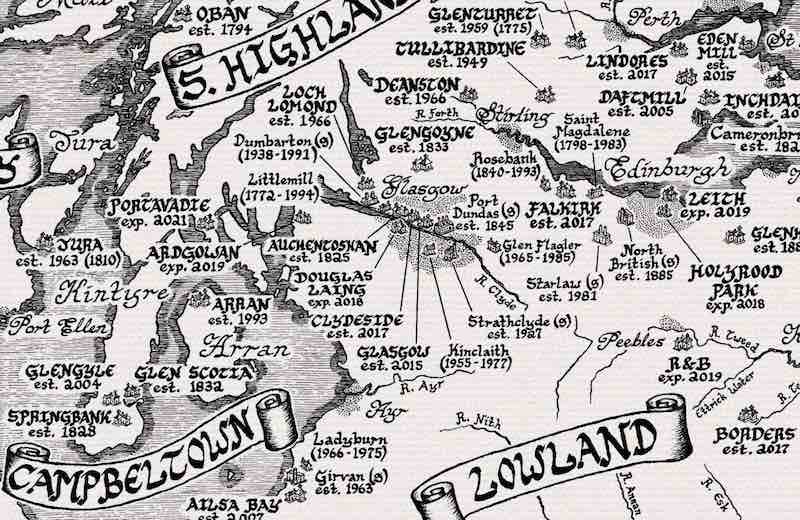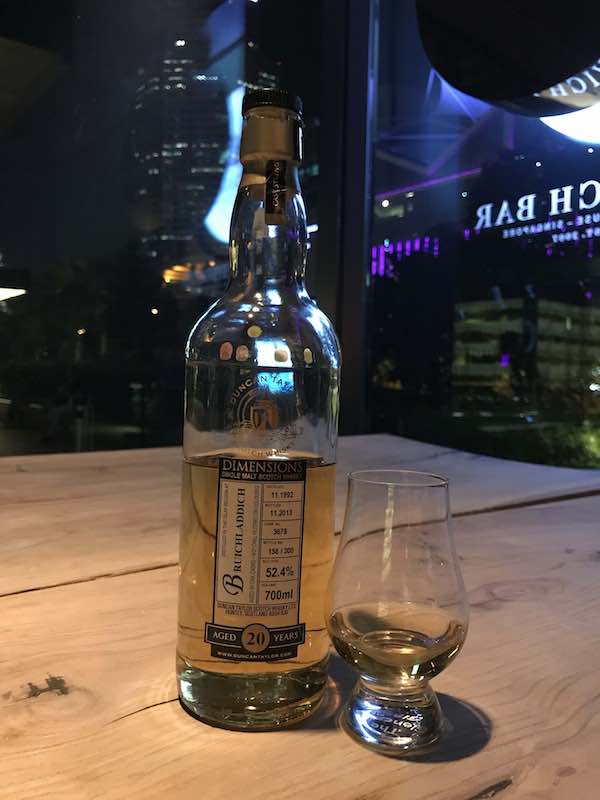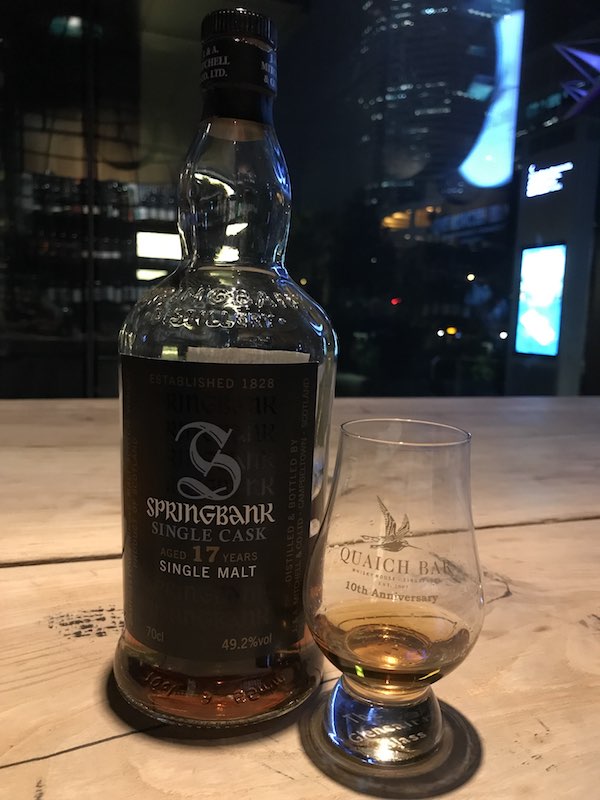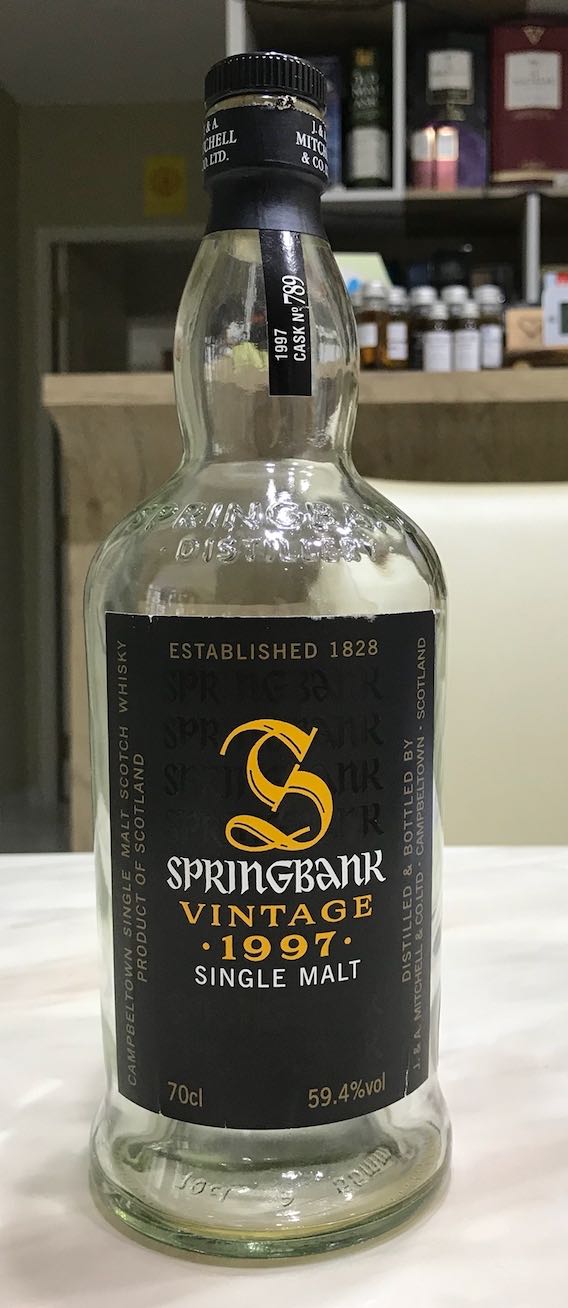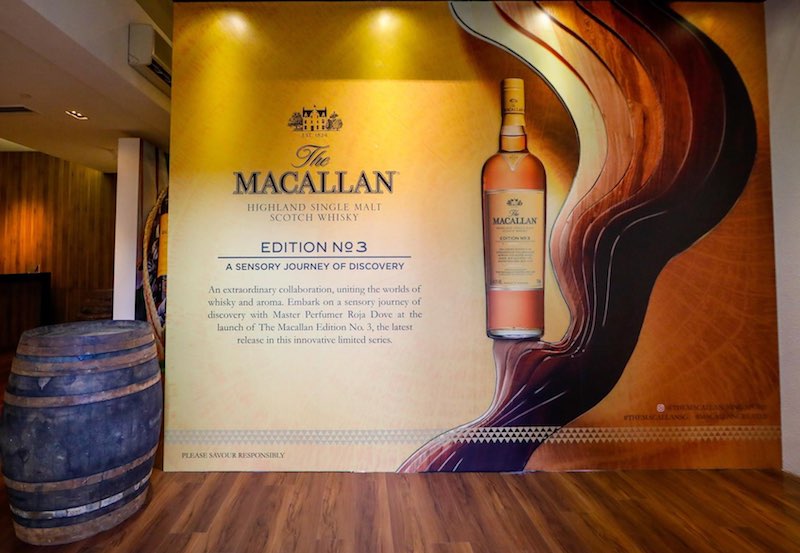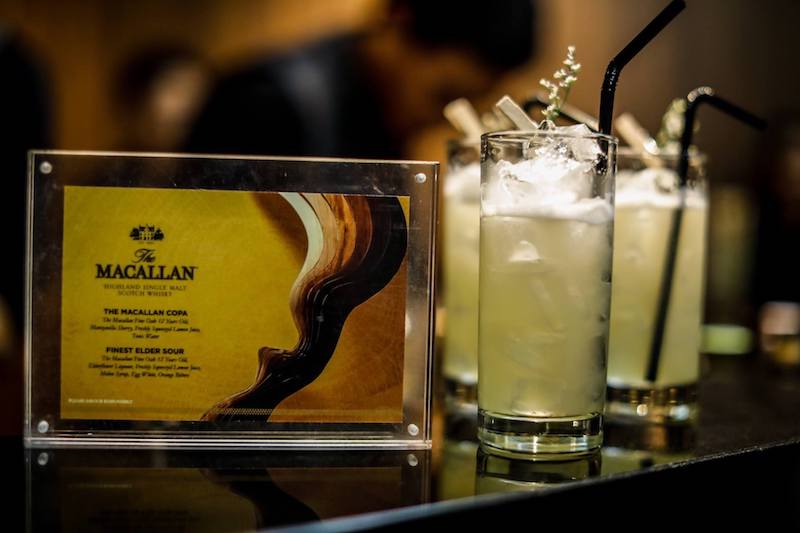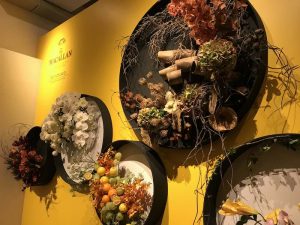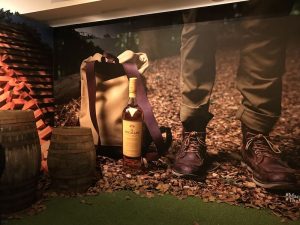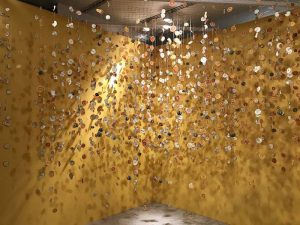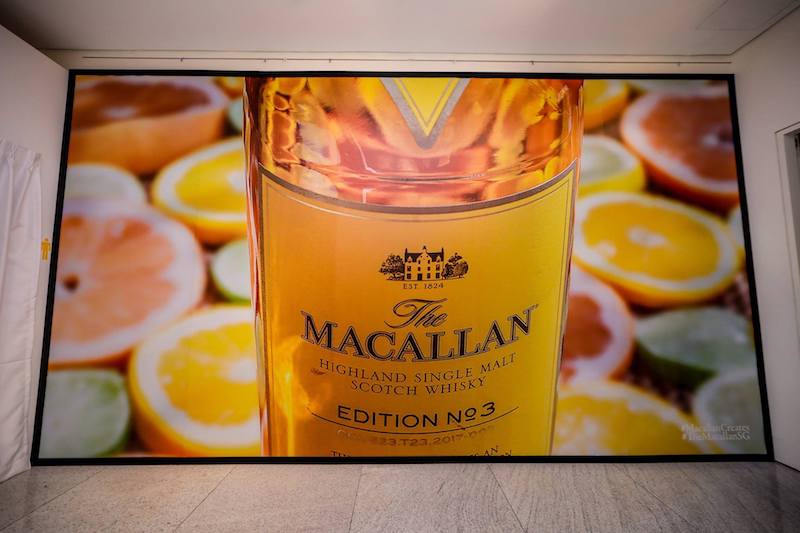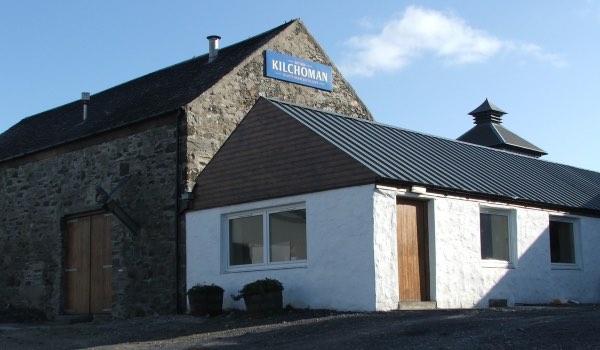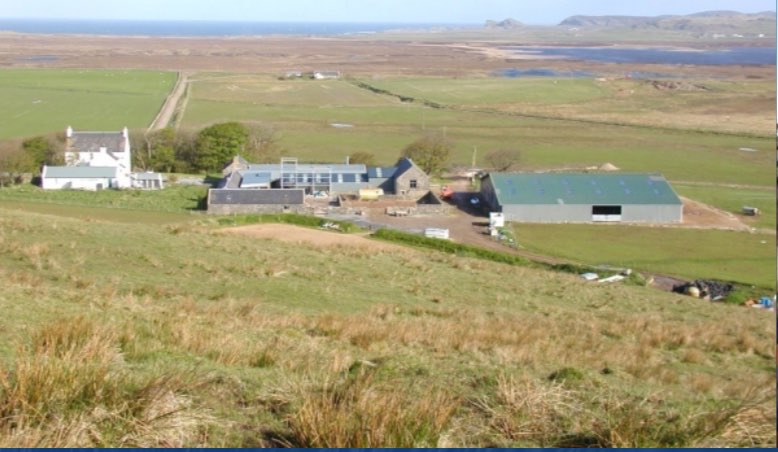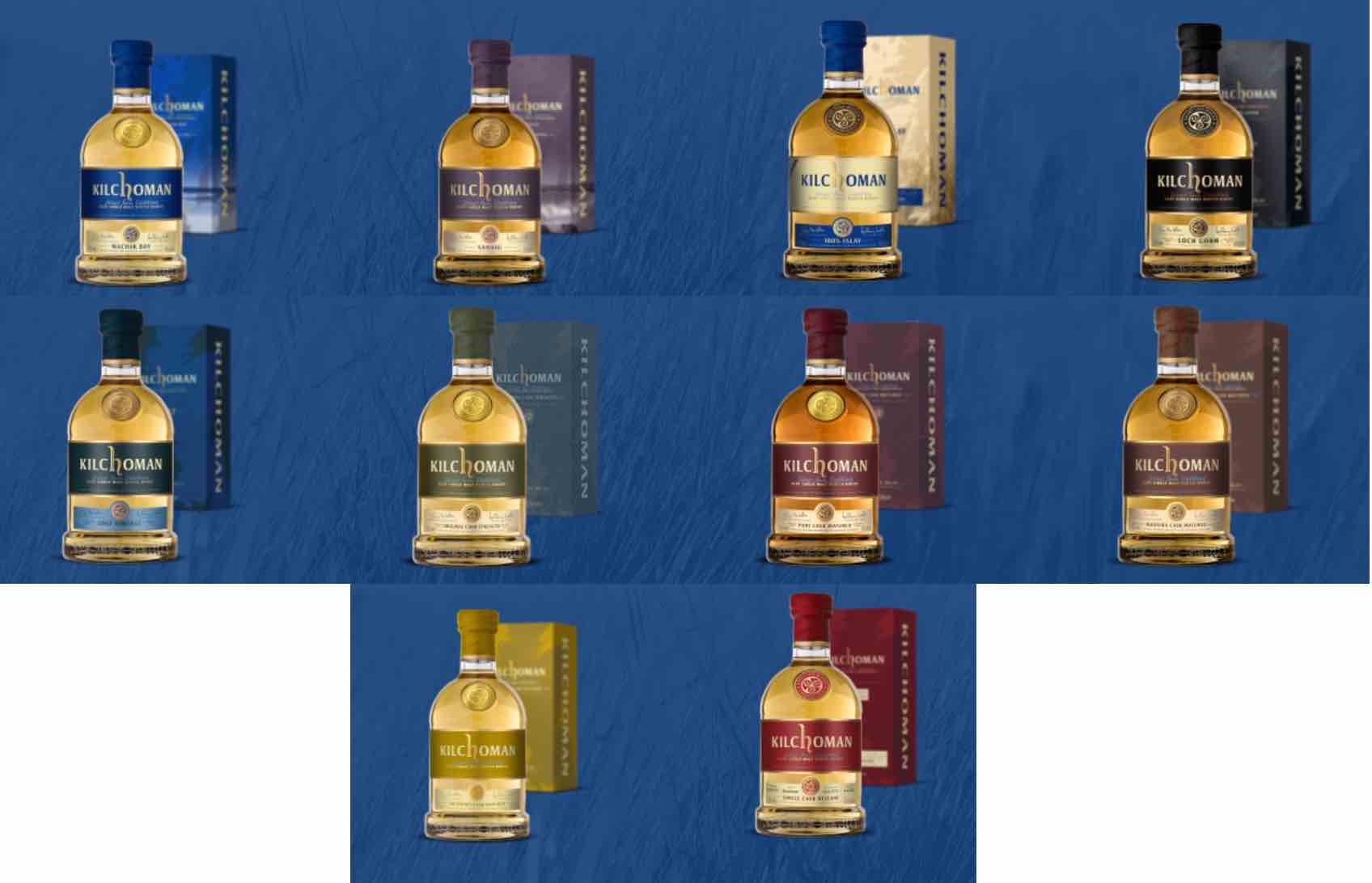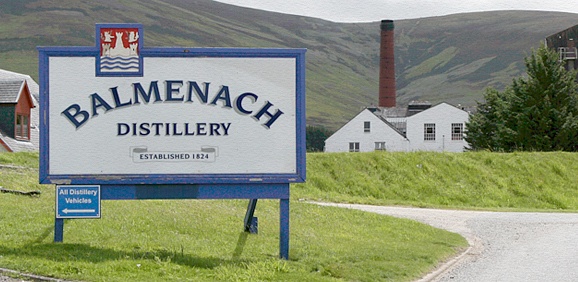Isle of Arran Distillery – The One and Only
The Isle of Arran Distillery sits in the foothills of the village of Lochranza on the north-west tip of the Isle of Arran. The owner of the distillery chose this location because of its vicinity to Loch na Davie. Loch na Davie holds the purest water in all of Scotland because granite and peat cleansed and softened the water in its slow meandering down from the mountaintops.
Short History of the Isle of Arran
The Isle of Arran used to house about fifty distilleries on the island. However, most of them were illegal, and smuggling activities went on for a period. Similar to Campbeltown, the proximity to water made producing and selling moonshine easy. However, as time passed, these illegal distilleries either obtained licenses to operate officially or close down. The last legal distillery on the Isle of Arran, called Lagg, was closed in 1837.
History of Arran Distillery
Harold Currie, a former director of Chivas, founded Arran Distillers in 1994 with the intention of building a distillery on Arran. Construction started in 1994 but halted after a pair of endangered golden eagles built their nests on a cliff near the distillery. As a result of the interruption, the distillery opened only in 1995. Arran distillery also took on the silhouette of two golden eagles as part of their logo.
The first spirit ran from the stills at the Arran distillery on 29th June 1995 at precisely 14.29 hours. It is the moment of glory for the Isle of Arran as it is the first legal distillation after more than 150 years of non-activity. The distillery was forced to store some casks in the warehouse of Springbank distillery due to their small capacity. However, in a recent revolutionary upgrade, the Arran distillery is now capable of storing and maintaining its production efficiency.
An interesting note about the founder, Harold Currie, is the fact that he was 70 years old when he decided to build Arran. He lived to a ripe, old age of 91 years old and left the distillery in capable hands when he passed on.
Production Methods at Arran Distillery
Arran distillery continues to use the traditional methods of producing whisky. The only drawback for the distillery is its lack of space for a traditional malting floor. Nonetheless, they buy their barley from the best source in Scotland to ensure high quality.
Arran distillery used barley and water from Loch na Davie to make their whisky. First, the barley and water are mixed in a mash tun to make wort, which then goes into wooden washbacks. The workers then add yeast to the wort for fermentation. To ensure a fruity new make, fermentation at Arran runs between 52 hours to 72 hours. The result is a liquid called “wash”, which is what we know as beer.
The workers double distilled the wash in copper pot stills and the final new make is a liquid that is about 68% alcohol strength. The distillation team placed this colourless liquid into oak casks that previously held sherry or bourbon. The wood gives the colour and character of the whisky, so the choice of the cask is one of the crucial influence for the final product.
Most of the Arran whiskies are bottled at either 46% abv or cask strength, so the flavours and aromas are retained for enjoyment. There are some of them which are bottled at 40% and 43% abv.
The Range of Arran Whiskies
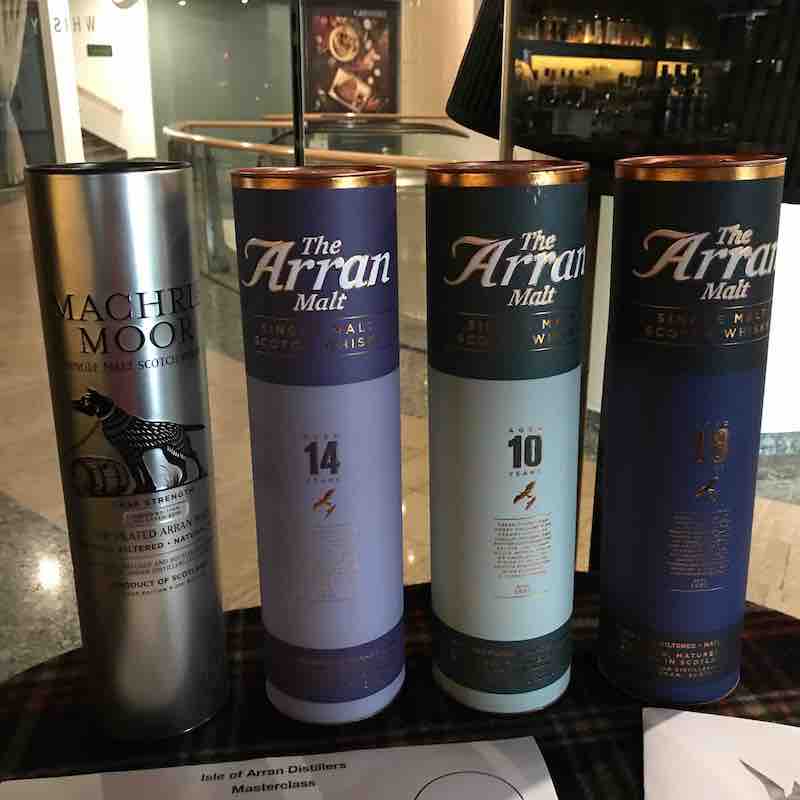
Some bottles from the range of Arran’s exceptional whiskies
Arran has an impressive range of whiskies despite its young age as a distillery. All of the single malt whiskies at Arran are non-peated except for one. While most of their single malts are non-age statements, they do have age statement whiskies in their core range. We highlight some of them below:
Arran Lochranza Reserve
This is a non-age statement whisky bottled at 43% abv. It was released to celebrate the location of the distillery and named after the village. It is made up of 7 to 8-year-old whiskies mostly matured in bourbon oak casks.
Arran 10-year-old single malt
The Arran 10-year-old single malt is their flagship single malt. It is the backbone of Arran distillery, and one of the most enjoyed Arran whiskies in the world.
Arran 14-year-old single malt
The Arran 14-year-old single malt is one which is exceedingly popular among whisky drinkers. Slightly more complex than the 10-year-old, it is the go-to Arran whisky if you are looking for more complexity and richer flavours.
Arran 18-year-old single malt
The Arran 18-year-old single malt is the premium league of the Arran range of whiskies. The complexity is heightened at 18 years old, and the whisky displays rich and matured notes of Arran’s signature – orchard fruits and vanilla.
Arran Machrie Moor and Machrie Moor Cask Strength
Arran Machrie Moor and its cask strength version are released yearly since 2010 in small batches. Every batch is slightly different, but the core flavours are mostly the same. The difference is more prominent in the cask strength version as the abv usually differs from the previous year batch.
In addition to the above, Arran also experimented with wine cask finishes. Currently, they have three different wine cask finished whiskies labelled as cask finishes.
Arran Port Cask Finish
The Arran Port Cask Finish is the first experiment of wine cask finish. Using barrels from Portugal, the port wine cask give a sweeter finish to the typical Arran Malt.
Arran Sauternes Cask Finish
The Arran Sauternes Cask Finish is a sweeter version of the Port Cask Finish due to the influence of the delicious white wine that is Sauternes. The whisky is highly complex with notes of the white Sauternes shining through.
Arran Amarone Cask Finish
The Arran Amarone Cask Finish is a marriage of the Arran malt with the cask of Amarone wine from the north-east of Italy. The Amarone cask imparts a bright reddish tinge to the whisky and gives higher complexity to the drink.
There are other Arran whiskies such as the Smugglers Series, The Bothy Quarter Cask, the Robert Burns Single Malt and the latest release of the Arran Malt Distiller’s Edition. The newest release celebrates the 10th anniversary of Arran’s master distiller, James MacTaggart working with Arran Distillery.
Arran In the Future
Arran distillery has much to offer to the world of whisky, and we look forward to more exceptional whiskies from them. There is new of a 21-year-old Scotch coming in 2018 so do stay tuned for more! Arran is also building a second distillery in the southern tip of the Isle of Arran, in the village of Lagg. The new distillery will take over the making of the peated Machrie Moor series. Estimated to complete only in 2019, the future of Arran is looking brighter with each passing moment.

